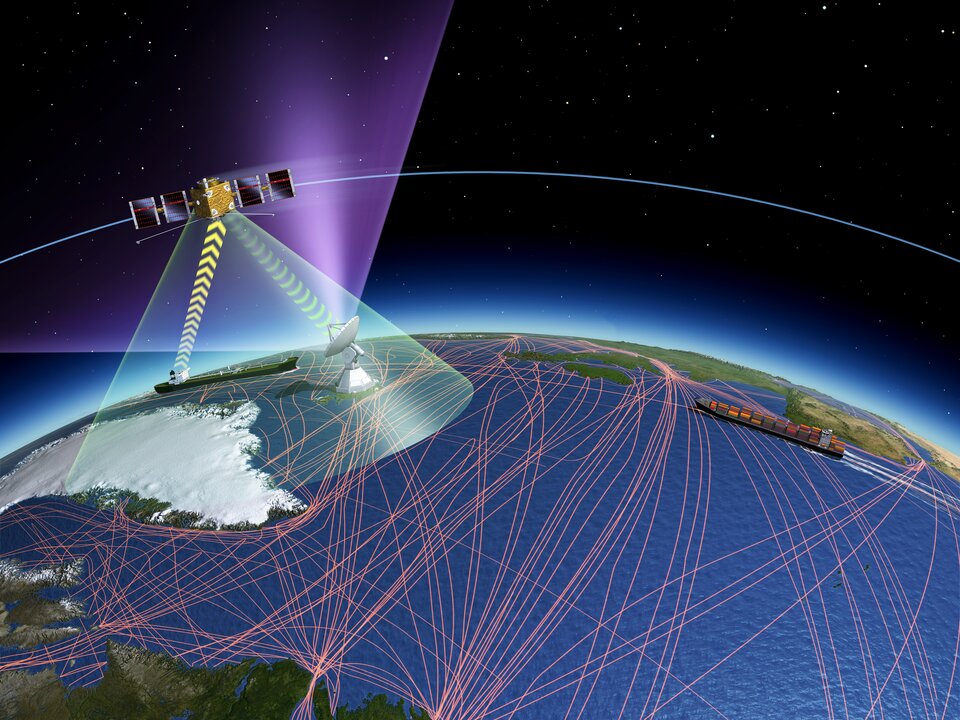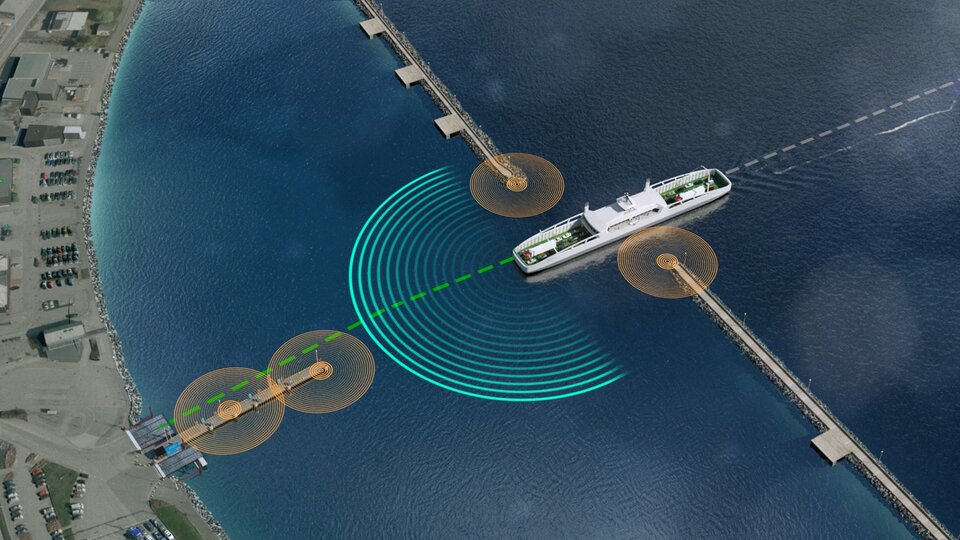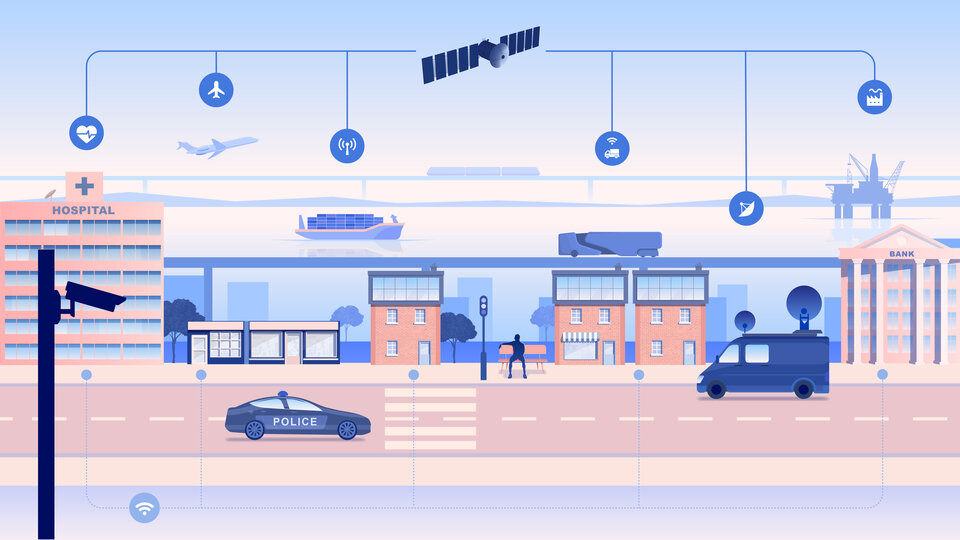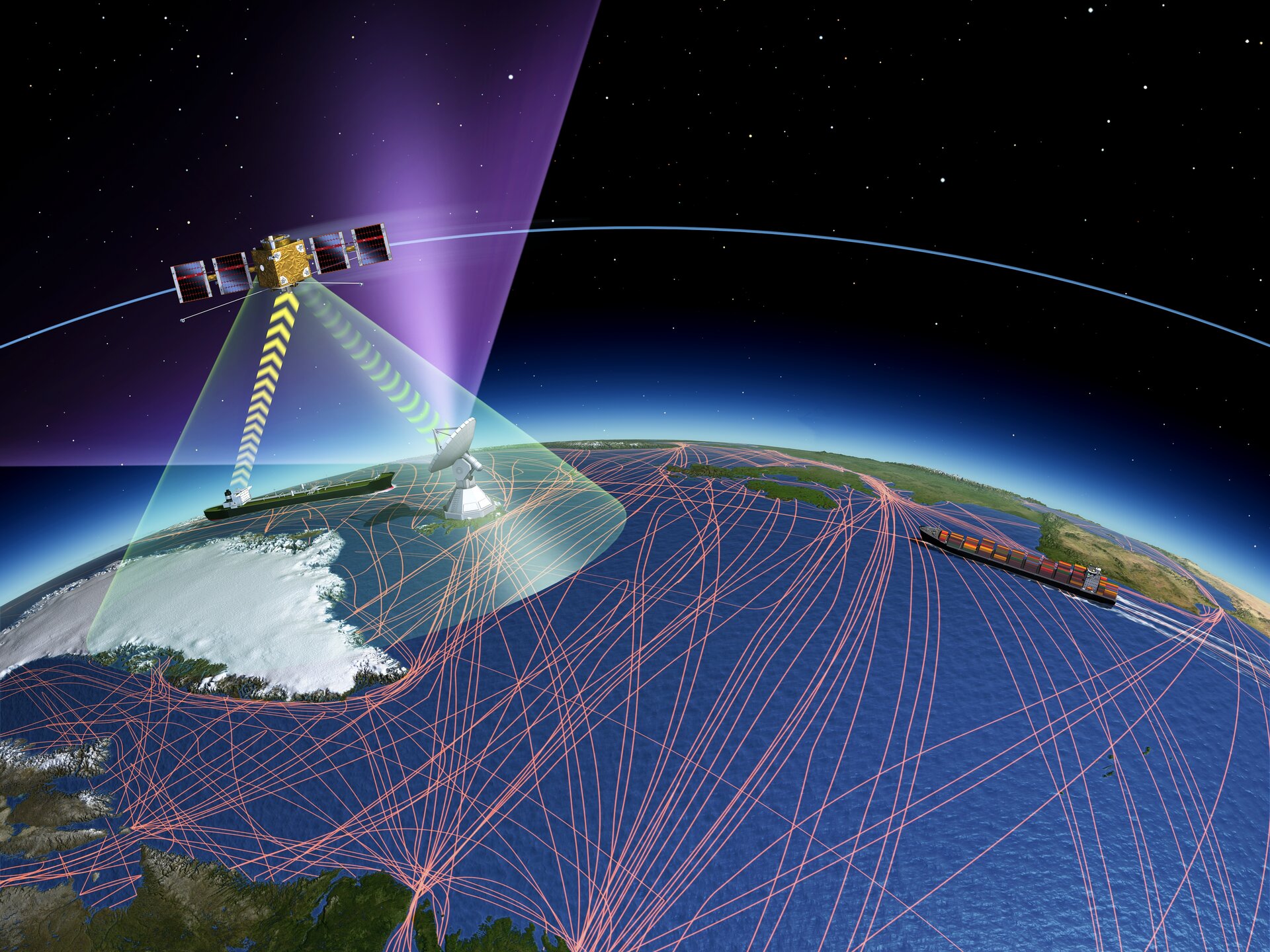Sustainable shipping for a sustainable planet
The United Nations' Sustainable Development Goals (SDGs) target a better and more sustainable planet Earth by 2030. With only ten years left to achieve them, one sector that we need to make more sustainable is shipping. Responsible for 90% of worldwide goods transport, ships generate roughly the same carbon footprint as Germany, pollute the ocean, and working conditions on board can be difficult and dangerous.
Every year, World Maritime Day is organised by the International Maritime Organization (IMO), who state that "The shipping industry…has already started the transition towards this sustainable future." Space can be used to support the transition, through satellite navigation and telecommunications, as well as through Earth observation data, technologies to work in harsh environments and processes developed for operating satellites.
Sustainable shipping is a key focus of ESA's new Blue Worlds Task Force – a body that aims to use space to address the specific maritime-related needs of ESA Member States. In particular, the Blue Worlds Task Force is exploring how space can support autonomous shipping.

Just as driverless cars could be the future of the automotive industry, ships without onboard captains could be the future of the shipping industry. Autonomous shipping has the potential to significantly lower costs, increase safety, solve anticipated crew shortages and improve working conditions.
Discovering the future
Autonomous shipping relies on a reliable, accurate and continuously available navigation system. ESA Discovery & Preparation supports research by academia and industry into novel concepts, some of which have looked at enhancing existing satellite navigation systems to enable autonomous shipping. One study designed a mission that would assist with autonomy thanks to its quick response time and ability to re-image an area very quickly. Applications could include routine monitoring of departure points and relocating ships at sea, as well as tracking ships and monitoring suspicious activity – such as illegal drug trafficking and piracy.
For a captain, one of the most difficult periods is entering or leaving a harbour. Another Discovery & Preparation study looked into creating a system that would monitor all ships in harbours and other congested areas to avoid collisions. The system would make use of ESA's Galileo and EGNOS systems to calculate new routes for ships. A third study looked into how satellite data could fill gaps in in anti-collision systems to complement ground-based sensors and ensure worldwide coverage.

Last year, Discovery & Preparation launched ESA's Open Space Innovation Platform with a call for ideas on using space to enable autonomous shipping. As a result of this call, several research studies, early technology development activities, and PhD and postdoctoral projects have kicked off, marking a big step forward in our ambitions towards autonomous shipping.
Partnering with Rolls-Royce
In 2017, ESA signed an agreement with Rolls-Royce to investigate how space technology could be used to develop autonomous and remote-controlled ships. The partners have since been pooling their expertise to analyse and implement space-enabled services; this would reduce opportunities for human error and allow crews to concentrate on more valuable tasks.
As well as satellite navigation, Earth observation data supports autonomous shipping by providing better situational awareness, and satellite communication services deliver improved onboard connectivity. ESA's collaboration with Rolls-Royce has focused on developing and validating new ship-to-shore communications systems, which ESA has been working on for some time under it's Satellite for 5G (S45G) initiative. This unified space-and-ground service will enable the operation of commercial autonomous shipping, as well as drive forward innovation in commercial marine vessels, cargo logistics and smart ports.

Going even further
Currently ESA's Navigation Directorate is overseeing two activities looking into enhancing autonomous shipping. One is focusing on onboard position, navigation and timing (PNT) receivers: the team of researchers is studying artificial intelligence and machine learning, implementing a prototype autonomous PNT receiver and exploring how current and future European global navigation satellite systems can be used to achieve these goals. The other activity is developing infrastructure and methods for verifying and testing autonomous shipping technologies and concepts. This will ensure high levels of security, safety and operability to build trustworthiness around autonomous shipping.
In 2019, ESA signed a memorandum of intent with One Sea to promote the development of space-based applications to analyse, enable and implement maritime digitalisation and autonomy. The agreement involves sharing resources, expertise and facilities to achieve common goals.
ESA is also funding a programme run by Estonian and Finnish organisations that seeks to ensure safer autonomous navigation for ships using a combination of different sensors, machine learning, and artificial intelligence. The project will combine data from visual images, environmental sound recordings, radar, lidar, satellite navigation and vessel transponders to automatically identify and recognise objects and provide improved situational awareness.
Furthermore, discussions are currently being held to assess how processes developed to manage satellites and space probes – and deal with their potential failures, so that they can recover, even when not in instant command by the Operations Centre – could be adapted, or provide hints, for those working on the development of processes for partially/fully autonomous ships.
"Through the Blue Worlds Task Force, ESA continues to work with interested Member States in a cross-directorate approach, to determine how ESA-developed technologies, products and programmes can help tackle the challenges of the Member States and the maritime stakeholders related to safe and efficient autonomous navigation of the seas," concludes Isabelle Duvaux Béchon, who leads the Task Force and ESA's Space for Earth programme.




